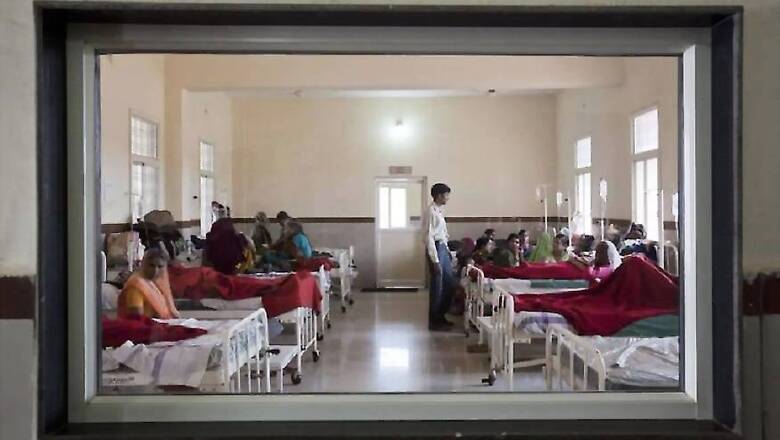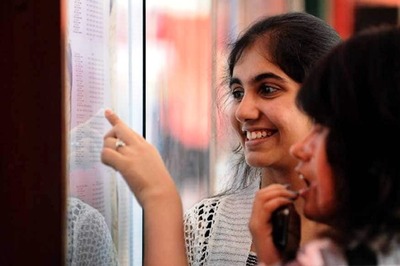
views
New Delhi: On April 7 every year World Health Day is celebrated with great gusto. However, this time things are likely to be different because of the worldwide Covid-19 pandemic. Therefore, the threat calls for some serious introspection for one and all because it has exposed the healthcare preparedness and emergency facilities of advanced, developed and developing countries equally.
As a result, on this World Health Day, all countries of the world should pledge afresh to make significant increase in the percentage of budget spent on the health sector. India, along with this step, should also focus on building healthcare infrastructure in urban areas in general and rural areas in particular. Let us think of simultaneous development in healthcare in rural and urban areas. Most of the countries including India are struggling hard today to meet the challenges which have been multiplying each passing day because of the outbreak.
That in India the healthcare system in rural areas is pathetic compared to urban parts is known to all. In addition, the sudden exodus of migrant workers from cities towards rural areas after a nationwide lockdown was announced has further intensified the problems in the countryside.
However, the workers' flight is not a law and order problem. It is, rather, the administrative and social responsibility of the local administration and the government. They should not be treated as refugees or untouchables in their own country, but instead with dignity, compassion and care. Maltreatment and ineffective handling of the migrant crisis at this juncture may further aggravate the pandemic into the worst kind of catastrophe.
We all know at this point there is a dearth of technical capacity and manpower in healthcare in urban areas also, but in rural areas this crisis is ever-present. The big question is, how are the authorities concerned in rural areas going to meet the challenges that have been posed by the Covid-19 threat.
According to Dr M Wasim Ghori, Fellow, Royal Society of Public Health, London & Executive Director - Medical & Health Information Management Association (MaHIMA), “Given the Covid-19 threat and subsequent mass exodus of migrant workers from cities to rural areas, India should use this opportunity to strengthen its rural primary healthcare system. First, prepare healthcare providers for what is coming; second, educate patients about what the coronavirus is and how to deal with it; and third, make strategic investments in telemedicine, remote diagnostics and creative surveillance systems that can help get ahead of the epidemic.”
“Finally, we are under-leveraging telemedicine and remote diagnostics too which further compounds the problems of rural healthcare and millions of patients with remote access are deprived of primary and specialised care. Irrespective of the current crisis, we need to adopt these; comprehensive guidelines and legislation will help significantly in bridging this divide," said Ghori.
On the question of immediate steps required, Ghori said, “We need to put in place a system of surveillance to help policymakers learn where the epidemic could be peaking in the next week. Creative solutions such as digital surveillance systems based on self-reporting of symptoms using the wide cellphone coverage in India have the potential to be a second-best solution that can be mobilised immediately.”
Sameer Bhati, Director - Star Imaging & Path Lab Ltd, New Delhi, said, “As per Rural Health Statistics 2018-19, the status of rural healthcare infrastructure as on March 31, 2019 stood at Sub centres at 1,57,411, which accounted for 75.3% in government buildings, Primary Health Centres at 24,855 that stood at 94.5% and Community Health Centres totalled to 5,335 with 99.3%.
The Covid-19 outbreak has exposed many things: the truth of our economy on the one side and the state of our healthcare system on the other. In spite of whatever GDP numbers we have posted so far, the naked truth is that we are still far from providing suitable healthcare to crores of people at their native place.”
“This situation is a great lesson for all of us, that without developing rural India we cannot become a sustainable country. The health sector in rural India should be our prime objective. The three SC, PHC and CHC numbers need to be enhanced with the highest level of quality standards. If we have an effective rural healthcare system in our country, then there will be no need ever to get panicked in any way because of such pandemics or epidemics," he said.
On the potential threat and the way forward, Dr Saantwana Vernekar, Founder and Chief Trainer, QTEAM, said, “The current exodus due to Covid-19 has shown a migration of over half a million people to native villages, majority of them from the labour class. Non-accessibility to public healthcare and low quality of healthcare services are the major concern in rural India, where the condition of medical facilities is deplorable."
She adds,"Considering this picture of grim facts, there is a dire need of new practices and procedures to ensure that quality and timely healthcare reaches the deprived corners of the Indian villages. Though a lot of policies and programmes are being run by the government but the success and effectiveness of these programmes is questionable due to gaps in the implementation.”
Vernekar added, “In rural India, where the number of Primary Health Centres (PHCs) is limited, studies show that 8% of the facilities do not have doctors or medical staff, 39% do not have lab technicians and 18% PHCs do not even have a pharmacist. Availability of medical equipment and essential disposables is a major challenge. There are ways of coping in a united way with this shortfall. One of them is by forming a rapid task force at every district-level zone controlled by the state zonal authorities. Further, rather than importing equipment, a better alternative is to have a pool of equipment list from all major healthcare organisations in the specific zone. These equipment can be tagged and through special transport system accompanied by service provider for these to be dispatched for use for the stipulated time.”
(The author is a freelance journalist. Views expressed are personal.)


















Comments
0 comment